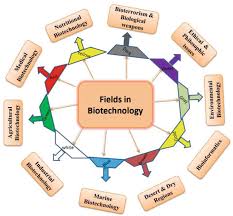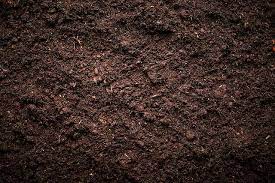Classification of Biotechnology
In this article, you will learn about these various areas of biotechnology, their mode of classification and issues common to techniques under similar classes.
Time-based Classification of Biotechnology
As we have already known, biotechnology has gone though a long process of development spanning over 8000 years. As a result of this, timeline has become one of the bases for classifying biotechnology. Under this scheme, biotechnology is classified as ancient, classical or modern.
Ancient Biotechnology
This refers to most developments and discoveries before the year 1800. Most of these discoveries and developments were based on common observations about nature, which could be applied for the betterment of human life at that point in time.
The developments and discoveries were directed principally to food production. Food, clothing and shelter have remained the most important basic needs of human beings irrespective of whether they lived in the ancient period or the modern period.
The only factor that has changed is their types and origins. The ancient ate raw meat, whenever they found a dead animal.
However, neither meat nor other foods were available all seasons and in all places at the same time. In those days, food was particularly scarce during harsh weather in some places.

Over time, this led to the domestication of food products, which gave rise to ‘agriculture’. In ancient times, humans explored the possibilities of making food available by growing it near their shelters, so that the basic need for food could be met easily.
They brought seeds of plants (mostly grains) and planted them near their shelters. They understood the importance of water, light, and other requirements for the optimal growth of food plants.
Similar principles and needs also led them to start domestication of different wild animals, which helped them to improve their living conditions and satisfy their hunger.
The need to hunt for animal was done away with it, as animals were now available to them at closer proximity, and they did not have to deal with the dangerous conditions of hunting.
Domestication of wild animals was the beginning of observation, implications, and applications of animal breeding. Certainly, we can say that this was the initial period of evolution of farming, which led to another needs like the development of methods for food preservation and storage.
They used cold caves to preserve food for long-term storage. It also made the way for the evolution of pots to store food products, in the form of leather bags, clay jars, etc.
After domestication of food crops and wild animals, man moved on to experiment on producing food materials from raw food products. Cheese was considered the first direct product made by humans.
It was made by an accidental mixture of the stomach of a calf to sour milk. This gave birth to fermentation and it is now known that the product came from the action of rennet (an enzyme found in the calf stomach) on milk.
Subsequent discovery of yeast led to further improvements in fermentation technology and gave rise to the making of bread, vinegar production and other fermentation products such as alcoholic beverages like whiskey, wine, beer, etc.
Fermentation became a powerful tool to improve their living conditions, even though the ancient people were ignorant about the principle behind it.
Read Also ; Factors Influencing Soil Moisture
Crossbreeding was also experimented in ancient times and the best outcome was the mule. Mule is an offspring of a male donkey and a female horse. Mules were used for transportation, carrying loads and farming.
Mule was found to be comparatively easier to obtain than hinny (offspring of a male horse and a female donkey). Later experiments showed that both mule and hinny have a chromosome number, compared to horse and donkey. Thus, biotechnology was in action long before its principles were understood.
Classical Biotechnology
The second phase of evolution and development of biotechnology can be called classical biotechnology. This phase existed from 1800 to almost the middle of the 20th century.
Prior to this period, scientific inventions such as the microscope had made humans aware of the existence of microorganisms and cells setting the stage for the real understanding of the principles of several human activities such as fermentation.
Important among discoveries that advanced biotechnology during the classical era was the fact that genetic information can be transferred from one individual/generation to another.
This discovery was done by Gregor John Mendel (1822-1884), an Austrian Augustinian monk, based on his study of Pisum sativum, commonly known as pea plant. Based on his findings, Mendel proposed the “laws of inheritance,” which suggested that invisible internal units of information account for observable traits, and that these ‘factors’ – later known as genes are passed from one generation to the next.
Almost at the same time Robert Brown had discovered nucleus in cells, while in 1868, Fredrich Miescher, a Swiss biologist reported nuclein, a compound that consisted of nucleic acid that he extracted from pus cells i.e., white blood cells (WBC).
These two discoveries became the basis of modern molecular biology, for the discovery of DNA as a genetic material, and the role of DNA in transfer of genetic information. 1n 1881, Robert Koch, a German physician described the bacterial colonies growing on potato slices (first ever solid medium).
Walter Hesse, one of the co-workers in Koch’s laboratory, discovered agar when he asked his wife what kept the jelly solid even at high temperature of summer. She told him it was agar, since then nutrient agar became the most acceptable and useful medium to obtain pure microbial cultures as well as for their identification.
In 1888, Heinrich Wilhelm Gottfried Von Waldeyer-Hartz, a German scientist coined the term ‘chromosome’, which is considered as an organised structure of DNA and protein present in cells or a single piece of coiled DNA containing many genes, regulatory elements, and other nucleotide sequences.
Other important developments and discoveries that paved the way for modern biotechnology during this period were coining of the term “biotechnology” in 1919 by Karl Ereky.
The development of vaccines against small pox and rabies by Edward Jenner, a British Physician and Louis Pasteur a French Biologist. Formulation of the theory of the gene in 1926 by Dr. T. H. Morgan, which explained the role of chromosomes in inheritance.
Almost about the same time, in Britain, Alexander Fleming a physician discovered antibiotics, when he observed that one microorganism can be used to kill another microorganism.
Fleming noted that all bacteria (Staphylococci) died when a mold was growing in a Petri-dish. Later, he discovered penicillin, the antibacterial toxin from the mold Penicillium notatum, which could be used against many infectious diseases.
Fleming wrote, “When I woke up just after dawn on September 28, 1928, I certainly didn’t plan to revolutionise all medicine by discovering the world’s first antibiotic, or bacteria killer.”
Actually, vaccines and antibiotics turned out to be the best saviours of humanity. The two most important discoveries during the classical era that paved the way for modern biotechnology were the existence of genes and chromosomes as well as the ability to use one microorganism against the other.
Modern Biotechnology
The discovery that genes are made up of DNA and can be isolated, copied and manipulated has led to a new era of modern biotechnology. This technological development started after the World War II. In 1953, J.D. Watson and F.H.C. Crick cleared for the first time the mysteries around the DNA as a genetic material.
They developed a structural model of DNA, popularly known as Double Helix Model of DNA that explained various phenomena related to DNA replication, and its role in inheritance.
This was later followed by the findings of Jacob and Monad who developed the concept of Operon in 1961 and in 1975, Kohler and Milestein completed the knowledge base with the concept of cytoplasmic hybridisation. This led to the production of world’s first ever-monoclonal antibodies, which has revolutionised the diagnostics.
By this time, most of the basic concepts and materials had become available to the world’s scientific community.
Nearly all that is required to be known about the cell, chromosomes and genes were known and basic tools for manipulating them at molecular levels were evolving on daily basis. The era of gene technology had arrived.
Dr. Hargobind Khorana was able to synthesise the DNA in test tube and Karl Mullis amplified DNA thousand times more than the original amount in a test tube.
Using this technological advancement, other scientists were able to insert a foreign DNA into another host and were even able to monitor the transfer of a foreign DNA into the next generation. Ian Wilmut, an Irish scientist successfully cloned an adult animal, using sheep as model, and named the cloned sheep ‘Dolly’.
Cloning can be used in preserving endangered species and reviving extinct species from frozen tissues. Craig Venter, in 2000, was able to sequence the human genome. These discoveries have unlimited implications and applications.
Bacteria agents can for example used to remediate oil contaminated sites and knowledge of the human genome may help trace the genetic sources roots of chronic and debilitating diseases.
Application-based Classification
Increasing scientific and industrial activities have given rise to more specialized and diverse uses of biotechnology as a tool of development.
This diversity has in turn brought about the need for a system to classify biotechnology uses based on common features or final purpose. As a result, nowadays there exist five main groups in biotechnological applications, which have been identified by a color system.
Red Biotechnology
Also known as Medical biotechnology, this is a collection of techniques used in the health sector including medicine and pharmacy. Red biotechnology comprises techniques used to produce vaccines and antibiotics, develop new drugs, undertake molecular diagnosis and perform regenerative therapies.
The major technique used in this branch is genetic engineering, cloning, genomics and pharmacogenics. Specifically, these techniques make it possible to understand how human body responds to drugs and how to make effective drugs.
This is achieved by the application of genetically modified yeasts and bacteria for the production of drugs that would otherwise be impossible to manufacture and manipulation of a patient’s genome to cure protracted and difficult diseases.
Some other relevant uses of red biotechnology are cell therapy and regenerative medicine, gene therapy, forensics through DNA profiling and production of medicines based on biological molecules such as therapeutic antibodies.
White Biotechnology
Also known as industrial biotechnology, this comprises all the biotechnology uses related to industrial processes. It is the application of biotechnology for industrial purposes, including manufacturing, alternative energy (or “bio-energy”) and biomaterials.
It includes the practice of using cells from yeast, moulds, bacteria and plants or components of cells like enzymes to generate industrially useful products. Thus, its primary objective is to reduce waste and industrial dependence on fossil fuels.
As a result, it pays a special attention to designing low resource-consuming processes and products, making them more energy efficient and less polluting than traditional technologies.
There can be found many examples of white biotechnology, such as the use of microorganisms in chemicals production, the design and production of new materials for daily use (plastics, textiles …) and the development of new sustainable energy sources such as biofuel.
Grey Biotechnology
Grey biotechnology, which is also known as Environmental Biotechnology includes all those applications of biotechnology directly related to the environment. These applications can be split up into two main branches: biotechnology for biodiversity maintenance and biotechnology for contaminants removal.
The first involves application of molecular biology to genetic analysis of populations and species in an environment, their comparison and classification and also cloning techniques aimed at species and genome storage technologies.
As for pollutants removal or bio-remediation, grey biotechnology uses microorganisms and plants to isolate and dispose of different substances such as heavy metals and hydrocarbons, with the added possibility of subsequently making use of these substances or by-products from this activity.
Green biotechnology
Also known as Agricultural Biotechnology, this is focused on agriculture as working field. Green biotechnological approaches and applications include creating new plant varieties of agricultural interest, producing biofertilizers and biopesticides, using in vitro cultivation and cloning plants.
The first approach is the one to undergo further development and attract the most interest and social controversy. Producing modified plant varieties is based almost exclusively on transgenes is, or introducing genes of interest from another variety or organism into the plant.
Three main objectives are pursued by using this technology. First, it is expected to get varieties resistant to pests and diseases -for example, currently used and marketed maize varieties resistant to pests such as corn stalk borer.
Secondly, use of transgenic plants is aimed at developing varieties with improved nutritional properties (e.g. higher content of vitamins). Finally, transgenesis in plants is also studied as a means to develop plant varieties able to act as bio-factories and produce substances of medical, biomedical or industrial interest in quantities easy to be isolated and purified.
Blue Biotechnology
This is based on the exploitation of sea resources to create products and applications of industrial interest. Taking into account that the sea presents the greatest biodiversity, there is potentially a huge range of sectors to benefit from the use of this kind of biotechnology.
Many products and applications from blue biotechnology are still object of study and research, although some of them are actually used on a daily basis. No doubt using raw materials from the sea represents the most widespread blue biotechnology in many different sectors.
These materials, mostly hydrocolloids and gellings are already being widely used in food, health, treatment, etc. Medicine and research are other major beneficiaries of development in blue biotechnology.
Some marker molecules from marine organisms are now commonly used in research. Enzymatically active molecules useful in diagnostics and research have also been isolated from marine organisms.
Read Also : Methods Used in Environmental Biotechnology
Some biomaterials and pharmacological or regeneratively active agents are being produced or investigated for their use in these sectors. Finally, sectors such as agriculture and cosmetics analyze the potential of blue biotechnology for its future development.
Biob informatics
This is a union of computer and biotechnology. It assists in rapid organization and analysis of biological and genetic data. It is applied in various areas, like functional genomics, structural genomics, and proteomics for various purposes like drug and molecular medicine development, gene therapy, creation of bio-weapons, improvement in crop plants for nutritional quality, resistance to disease, pest, drought etc.
In summary, it has been shown that biotechnology can be classified either in terms of historical developments or areas of application. In terms of historical development, biotechnology is classified into three main classes of ancient, classical and modern biotechnology.
Ancient biotechnology include techniques developed and used from prehistoric days up to about 1800 AD, classical biotechnology include those emerging from 1800 AD to the end of the World War II, while modern biotechnology are those methods developed since the World War II.
In terms of application, it has been shown that biotechnology can be classified into six classes identified by different colours. These include red (medical and pharmaceutical) biotechnology, white (industrial) biotechnology, grey (environmental) biotechnology, green (agricultural) biotechnology, blue (marine) biotechnology and bioinformation (computer-based) biotechnology.
Biotechnology is classified according to the historical developments or areas of application. There are three major historical classes of ancient (prehistoric era to 1800), classical (1800 to end of World War II) and modern (end of World War II to date). In the next unit, you will learn about the scope of environmental biotechnology.



